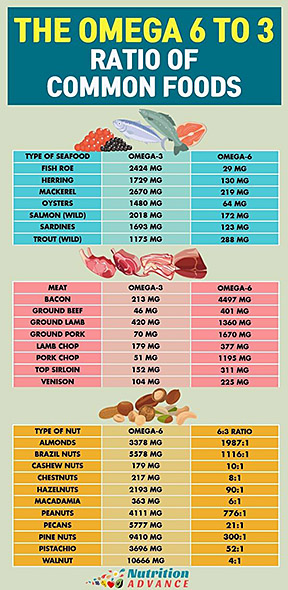Ask About the Basics
Hopefully, things will be approaching some semblance of normalcy soon. Many of you have skipped doctors visits of all sorts or tried the telemedicine visit. Oh , don’t go feeling sorry for us healthcare professionals. I’m not writing this column to drum up business. As long as you insist on eating at McDonald’s and Kentucky Fried Chicken and Burger King etc., etc., etc., healthcare is never going to be wanting for business. As long as you continue to follow the current published dietary guidelines I will be busy for the foreseeable future. So will all the surgeons and other doctors. So when you do, in fact, go back and have an in-person visit let me walk you through what you should really be focused on.
Of course you should talk about your overall health and that has to involve some conversation about your national status. You can look at this in three broad categories of intake ; proteins, fats and carbohydrates. Protein is very easy to measure; both total protein and albumin in a simple and inexpensive blood test . But to mea sure the individual amino acids is much more expensive and complex so it’s the cheapest component to test for but it’s almost always normal so unless it’s out of range it doesn’t tell you much.
Moving now to measuring how you’re doing in terms of your carbohydrate intake is the test for insulin and sugar. A simple mathematical calculation provides your level of insulin resistance. Insulin resistance equals metabolic syndrome. Metabolic syndrome equals increased risk of heart attack, cancer, stroke, early death, obesity, dementia, arthritis etc. Have I left anyone out? By measuring your insulin resistance you will get a sense of how your body is handling sugar / carbohydrates. This blood sample needs to be drawn while fasting. But it can be done over and over again to assess your response to changes in your diet. This gives you yet another independent, reliable, and validated tool to tell us, like, Hemoglobin A1c etc of how you are doing in your management of sugar. The insulin level is going to be abnormal long before the hemoglobin A1c and blood sugar tests are abnormal. Your doctor or healthcare provider hasn’t ordered it because they have focused on the sugar but your sugar’s will be in a normal range for years while your insulin is elevated. It’s not an expensive test. It’s very very simple to interpret ….the lower the number the better.
 Finally it comes to measuring the fats in your diet and your fat management. It’s easy for your doctor to measure your cholesterol and of course the minute they do they focus on the number and if the number is over 200 you’re on a statin. Unfortu nately, the cholesterol hypothesis has been demonstrated to be false. The article referenced below is just one of many …. an up-to-date review of 19 different studies which, when examined ,showed an inverse relationship between your bad cholesterol (the LDL) and all-cause mortality meaning the higher your bad cholesterol the longer you lived. It’s painful for me as a 30-year healthcare provider to have to admit that what I’ve been promoting for years is just, in fact ,not true. So when I order your cho lesterol panel I’m not concerned at all about your cholesterol unless it’s too low but I am worried about your triglyceride to HDL relationship because this, I think, really reflects your metabolic state. The higher the triglyceride to HDL ratio the worst your metabolic state. you are probably not focusing on this when you review your labs with your provider. This concept is really not new and it is part of the very definition for metabolic syndrome.
Finally it comes to measuring the fats in your diet and your fat management. It’s easy for your doctor to measure your cholesterol and of course the minute they do they focus on the number and if the number is over 200 you’re on a statin. Unfortu nately, the cholesterol hypothesis has been demonstrated to be false. The article referenced below is just one of many …. an up-to-date review of 19 different studies which, when examined ,showed an inverse relationship between your bad cholesterol (the LDL) and all-cause mortality meaning the higher your bad cholesterol the longer you lived. It’s painful for me as a 30-year healthcare provider to have to admit that what I’ve been promoting for years is just, in fact ,not true. So when I order your cho lesterol panel I’m not concerned at all about your cholesterol unless it’s too low but I am worried about your triglyceride to HDL relationship because this, I think, really reflects your metabolic state. The higher the triglyceride to HDL ratio the worst your metabolic state. you are probably not focusing on this when you review your labs with your provider. This concept is really not new and it is part of the very definition for metabolic syndrome.
Here’s the link to the article regarding the relationship between LDL cholesterol and
mortality. https://bmjopen.bmj.com/content/6/6/e010401
But wait, there’s more to explore in the world of fats and your diet. You must work with your doctor to measure your omega-6 and Omega-3 ratio. The omega-6 is the anti-inflammatory essential fatty acid and the omega-6 is the inflammatory es sential fatty acid. Examples of the major Omega-3s include EPA and DHA. These are found in fish oil, fish etc, Examples of the Omega-6 fatty acid would be arachidonic acid which along with cholesterol EPA and DHA makeup vital fats for your brain. It’s important though that they’re balanced and for most of us we are way out of balance due of course to the diet. The optimum Omega 6 and 3 ratio is 1:1 but most people have a 5 : 1 or 10 : 1 ratio which means that every cell in their body is affected by this distortion. This ratio is easy to measure and is actionable. Cut down the corn oil, the canola oil, the vegetable oils and cut down the fried foods. That will lower your omega-6 as you raise omega-3s by either having more fish nuts etc. in your diet or by supplementing and, of course, I recommend cod liver oil just like Grandma used to do.
So now I’ve given you the information and the rationale to go to your doctors and have a proactive visit about what’s really important; these basic elemental markers of your nutritional status. If you’re not measuring your insulin resistance and you’re not measuring the Omega 6:3 ratio and you’re not measuring the triglyceride HDL ratio you’re flying in the dark with your health. Better fasten your seatbelt. Better yet… fast!
Luckily, all of those measures are completely controlled by you and your diet. These are simple inexpensive tests you can have repeated over time to measure your success in other than just the inches on your waist. These tests are reliable , usually covered by
insurance , and give you a way to keep yourself honest. Now go get what you need!
Until next month, get well and stay well. JT BARRY MD











